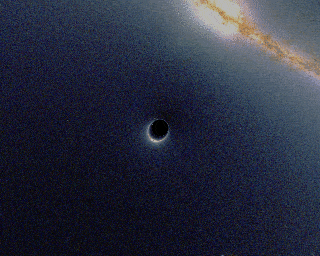Human beings have always had a great affinity for space, and have always had a desire to learn and understand the complexity of the universe. Trying to understand everything unknown to us has driven us to commit the most incredible acts ever performed by human beings. From the first trip to the moon or the race to conquer Mars, all these feats are a reflection of our capacity as a species, and that we are on the right evolutionary path to understanding all that we do not know or have only been able to understand a mere surface of its complexity.
You may be interested:
Introduction to Black Holes
Black holes are part of what we call the mystery of the universe. Without the help and dedication of geniuses like Albert Einstein and Stephen Hawking, perhaps humanity would never have a close idea of black holes and everything related to them. Thanks to the intervention of these geniuses and many others, and their immense thirst for knowledge, we have managed to understand that black holes are nothing more than large regions that possess a gravitational field of immense power that can absorb anything, including light, or affect the space-time of the universe.
These are produced by a massive explosion of a star whose core collapses, causing the star to exceed its maximum mass and begin the process of consuming its energy and fuel. This process results in the mass of the star becoming more and more compact, becoming an increasingly solid and cold object, whose gravitational force is capable of absorbing any type of matter. This object ends up being known as a black hole. Stephen Hawking once explained easily that black holes cannot be cataloged literally as holes with the capacity to absorb or swallow everything close to them, this is undoubtedly a myth.
They are just cold objects that come as a result of a huge explosion of a star, and they possess an enormous amount of matter and mass that is so compact, so dense that it generates such a strong gravitational attraction that no kind of matter or light can escape. Therefore it is a mistake to say that black holes are empty or that they are huge holes that swallow everything in their path.
This is one of the reasons why, expert scientists explain that it is unlikely that a black hole is a danger to the earth since the sun of our solar system does not possess the minimum mass necessary to generate a black hole, besides it is practically impossible for a black hole to get close enough to the system’s orbit, let alone to affect the earth.
Clasification
Black holes are classified by their size, that is, they are cataloged by their mass and the force of gravity they possess. According to NASA, black holes are classified as small, stellar, and supermassive. The genius Stephen Hawking defined that “black holes dissolve slowly like aspirin in a glass of water”, this means that despite their complex formation and existence, black holes can disappear over time.
After the last studies of black holes, we could detect that these, once formed, can radiate light through a process in which the material around the black holes heats up to such a temperature that it generates a ring of photons around the matter, and it does so reaching the speed of light, which ends up affecting the space-time. This phenomenon has helped scientists take detailed pictures of the composition and exact shape of a black hole. Without a doubt, it has helped us to better understand everything related to this natural process of the universe.

It is important to detail some important facts about black holes. We start by saying that black holes can be considered as invisible since any light that is near them will be absorbed. Another important fact is that black holes can be as small as the size of an atom, however, they can possess the mass of a mountain and therefore have a great force of gravity. As a third curious fact, it is that for some scientists there is the theory that all the existing galaxies possess in their center a supermassive black hole, in fact, our galaxy, the Milky Way, possesses in its center a supermassive black hole, called “Sagittarius A”.
It is also essential to note, that for most of the scientific community, the first black holes formed just after the Big Bang, and are a fundamental part of the creation of the universe we know today. Another very important fact to take into account is that they can merge, this happens when two galaxies merge. It is also known that black holes take less time than previously thought to completely form, in fact in a recent study, supermassive ones can take less than a billion years to form.
Thanks to all these studies and statements, many people have been educated about some of the myths of black holes. For example, it has been proven that not all of them are the same size, as we have explained above, they have different sizes that are defined by their masses. There is also a myth that explains that if you are at a certain distance from a black hole, you will be attracted to it by its strong gravity. However, this is not entirely true; any object that has the same gravity as the black hole will not be absorbed.
Finally, in the past it was believed that everything that was absorbed into a black hole could not get out, however, this is not entirely true either. One of Stephen Hawking’s last contributions was to prove that large amounts of radiation escape from black holes, which over time can cause it to evaporate. Thanks to this study, this type of radiation was given the name “Hawking radiation”.
Regardless of the studies and theories carried out, what is very evident is that black holes are one of the most interesting and fascinating subjects that the universe does not give away. The study of this natural process brings us a little closer to understanding the complex nature of the universe and finding the answer to those issues that we still do not understand such as dark matter or space-time distortions.












